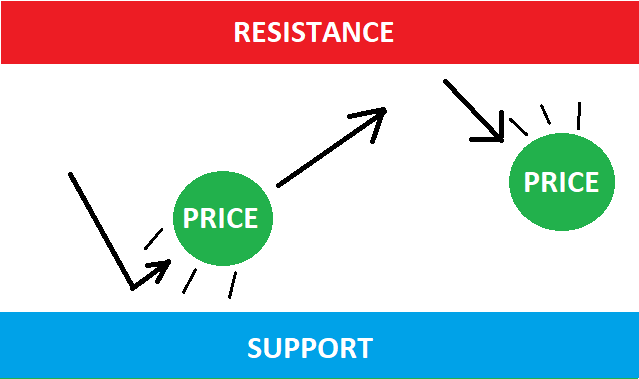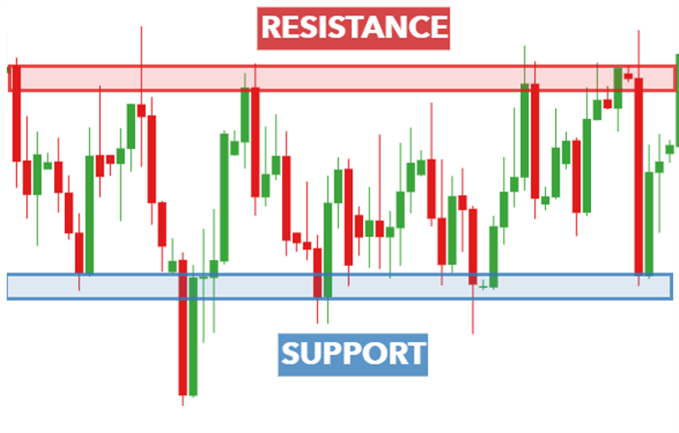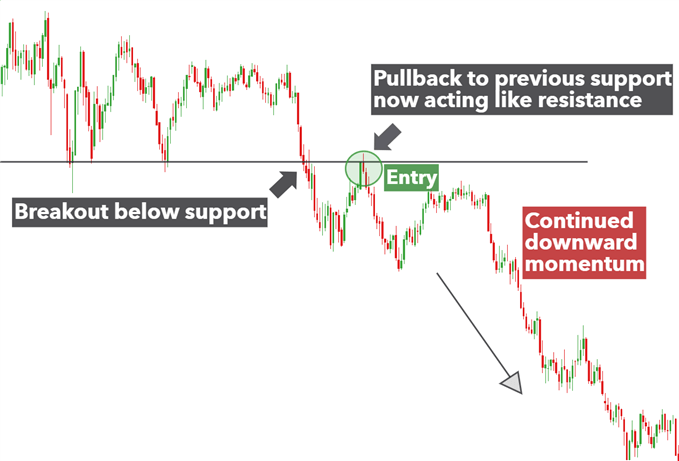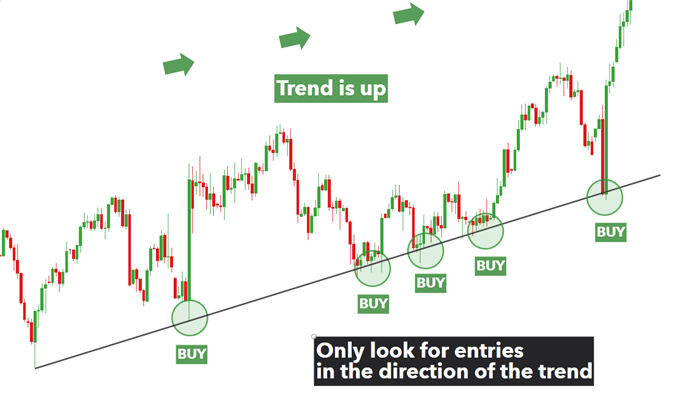Forex Support And Resistance Strategy

Acquire how to trade using support and resistance levels
Support and resistance is a powerful pillar in trading and about strategies have some type of back up/resistance (S/R) analysis built into them. Support and resistance tends to develop around fundamental areas that price has regularly approached and rebounded thereafter. This article explains what back up and resistance is and covers meridian support and resistance trading strategies.
At DailyFX, nosotros have a defended support and resistance folio showing areas of support and resistance for tiptop currency pairs, bolt, ind i ces and cryptocurrencies
What is Support and Resistance?
Support and resistance is one of the nearly widely followed technical analysis techniques in the financial markets. It is a uncomplicated method to clarify a chart quickly to determine 3 points of interest to a trader:
- The direction of the market
- Timing an entry in the marketplace
- Establishing points to exit the market at either a profit of loss
If a trader tin can respond the 3 items above, then they essentially have a trading thought. Identifying levels of back up and resistance on a chart can answer those questions for the trader.
Support
Support is an area on a chart that price has dropped to merely struggled to suspension below. The diagram higher up shows how toll drops down to the area of back up and subsequently 'bounces' sharply from this level.
In theory, back up is the cost level at which demand (ownership power) is strong enough to preclude the price from declining further. The rationale is that, equally the price gets closer and closer to support, and becomes cheaper in the procedure, buyers see a better deal, and are more likely to buy. Sellers become less probable to sell, since they are getting a worse deal. In that scenario, demand (buyers) will overcome supply (sellers) and that will prohibit price from falling beneath back up.
Resistance
Resistance is an surface area on a nautical chart that toll has risen to simply struggled to break in a higher place. The diagram above shows how price rises up to the area of resistance and subsequently "bounces" sharply from this level.
Resistance is the price level at which supply (selling power) is strong enough to forbid the cost from rising farther. The rationale behind this is that as the cost gets closer and closer to resistance, and becomes more expensive in the process, sellers are more probable to sell and buyers get less likely to buy. In that scenario, supply (sellers) volition overcome need (buyers) and that volition prohibit cost from going above resistance.
For a comprehensive guide, read our folio on Forex Support and Resistance Explained .
Summit 4 Support and Resistance Trading Strategies
Beneath are four superlative strategies for trading with support and resistance:
i) Range trading
Range trading takes place in the space between the support and resistance as traders aim to purchase at support and sell at resistance. Think of the area between support and resistance equally being a room. Back up is the floor and resistance the ceiling. Ranges tend to announced in sideways trading markets where there is no clear indication of a trend.
Pro Tip – Levels of support and resistance are not e'er perfect lines. Sometimes cost will bounce off a particular area, rather than a perfect directly line.
Traders need to place a trading range and therefore, need to identify areas of support and resistance. The area of support and resistance tin be identified and is shown in the chart below:

When the market is range-leap, traders tend to expect for long entries when cost bounces off support and brusque entries when price bounces off resistance.
It is articulate to see that price has not always respected the bounds of support and resistance which is why traders should consider setting stops below support when long, and above resistance when going short.
When price does break out of the divers range, this can either exist due to a breakout or a false breakout, also known as a "fakeout". It is essential to adopt sound risk management to limit downside take chances when markets breakout of the trading range.
ii) Breakout strategy (pullback)
It is often the case that after a period of directional uncertainty that price will breakout and brainstorm trending. Traders often look for such breakouts below back up or in a higher place resistance in order to capitalize on further increasing momentum in one direction. If this momentum is strong enough information technology will have the potential to start a new tendency.
Yet, in an attempt to avoid falling into the trap of trading the false breakout, top traders tend to wait for a pullback (towards support or resistance) before committing to a trade.
For case, the chart below shows a stiff level of support before sellers pushed the price down beneath support. Many traders might go carried away and rush to place a short merchandise prematurely. Instead, traders should wait for the response in the market (buyers attempting to proceeds control) to break downwards before executing a brusque merchandise.
In the below scenario, traders should wait for the market to continue moving down, after the pullback, before looking for entry points.

three) Trendline strategy
The trendline strategy utilizes the trendline as either back up or resistance. Simply draw a line connecting two or more than highs in a downtrend, or two or more lows in an uptrend. In a strong trend, price will bounce off the trendline and continue to move in the management of the trend. Therefore, traders should just be looking for entries in the direction of the trend for higher probability trades.

four) Using Moving averages equally support and resistance
Moving averages can double upward as dynamic support and resistance. Popular moving averages to include are the 20 and fifty flow moving averages, which can be altered slightly to 21 and 55 catamenia moving averages to make use of Fibonacci numbers. Information technology is not uncommon for traders to incorporate the 100 and 200 MAs and ultimately, it is up to the trader to find a setting that they are comfy with.
From the chart below, it is articulate to encounter that the 55 MA initially tracks above the market place as a line of resistance. The market and so bottoms and reverses and the 55 MA then becomes the dynamic level of support. Traders can use these trendlines to make informed decisions about markets likely to go on trending and those susceptible to a breakout.

Support and Resistance Trading Primal Takeaways
- Support and resistance is a powerful colonnade in trading and almost strategies have some type of support/resistance assay built into them.
- Support and resistance strategies can either exist based on cost respecting these levels (range bound strategy) or anticipating the suspension of support and resistance (Breakout and pullback strategies).
- Price will not respect support and resistance forever. Bearing this in mind, traders need to adopt sound take a chance management to limit losses if in that location is a breakout.
Larn More Nigh Technical Analysis in Forex Trading
- Identifying Support and Resistance
- Maximizing Breakout and Pullback Strategies
- 3 Tips for Trendline Trading
- three Unproblematic Ways to Place Back up and Resistance in Forex
- Technical vs Fundamental trading
DailyFX provides forex news and technical analysis on the trends that influence the global currency markets.
Source: https://www.dailyfx.com/education/learn-technical-analysis/support-and-resistance-trading.html
Posted by: pettitwhory1993.blogspot.com


0 Response to "Forex Support And Resistance Strategy"
Post a Comment